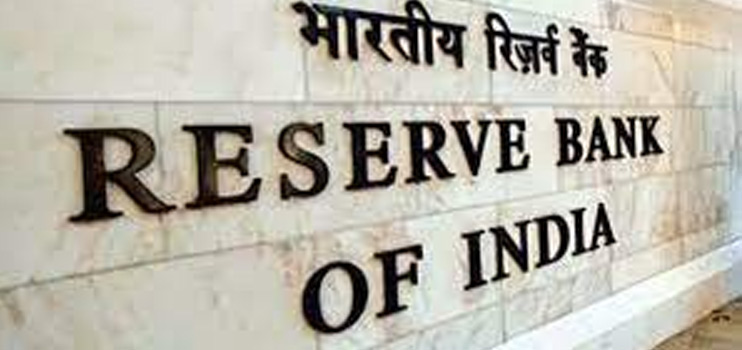Many in the top management of India’s rating agencies are spending sleepless nights.
The rules of bank loan ratings with credit enhancement (adding “CE” suffix) have changed, but there is no change for the ratings of other debt instruments. Bank loan ratings have more than 90 per cent share of the rating universe and many entities, which are seeking bank loans, are also raising debt in the form of bonds and non-convertible debentures, etc., from the market.
Seven credit rating agencies have collectively rated at least 59,000 companies so far. Of these, 920 have active debt issues.
The rating on a loan that has a corporate guarantee is called bank loan rating with CE suffix. A corporate guarantee is a promise by the parent to assume the debt obligation of a group company if it fails to service a loan.
There are debt instruments, too, that have some form of external credit enhancement (a structured payment mechanism or a corporate guarantee) that carry the CE suffix. Also, there are debt instruments that carry the “SO” (structured obligations) suffix. The raters use ‘SO’ to ratings of securitised papers like pass-through certificates (PTCs). They are like bonds but carry interest rate risk and prepayment risk, beside risk of defaults. PTCs service interest and repay the principal amount out of the cash flow, generated by an underlying pool of loans such as asset-backed securities and mortgage-backed securities.
The reason for the raters’ insomnia is that they are playing on a turf where there are two referees – the Reserve Bank of India or the RBI (for bank loan ratings) and the Securities and Exchange Board of India or Sebi (for debt instruments).
The market regulator, through a circular dated June 13, 2019, created a broad distinction between SO- and CE-rated instruments. (Future receivables like a pool of loan pools are to carry an SO suffix, while an external credit enhancement like a corporate guarantee is to carry a CE suffix.) The banking regulator has recently issued a guidance note enlisting conditions for a CE suffix and spelt out the types of support in the form of guarantees that will qualify.
The raters need to follow the guidance note, issued on April 22, for every CE rating now. In case of an existing bank loan with a CE rating, the transition to the new regime may be undertaken as part of the next periodic surveillance as and when due or six months from the date of this advisory –whichever is earlier. In other words, by October 21, the rules of the game will change.
Ratings are a must for accessing credit from banks under Basel II norms, which say the methodology for assigning credit ratings must be rigorous and systematic. The RBI had mandated that all rating agencies shall use a uniform definition of default for bank loan ratings and they are subject to continuous surveillance.
While sanctioning a loan to a corporate borrower, each bank assesses its health and rates it; the loan rate is fixed accordingly. The external rating has a bearing on a bank’s capital requirement as it determines the so-called risk weight.
For instance, for a triple-A rated company, a bank needs to set aside just Rs1.80 capital for a Rs100 loan; for a double-A company, the capital requirement rises to Rs2.70; and for A, to Rs4.50. For a triple-B company, banks need to set aside Rs9 for a Rs100 loan since it carries 100 per cent risk weight. For companies rated below triple-B, the capital requirement jumps to Rs13.50 —- 150 per cent risk weight.
Strangely, for a loan given to an unrated entity, the capital requirement is Rs9, the same as a triple-B rated company. This is why many not-so-healthy companies are reluctant to be rated or have got out of the rating net. At least 21,000 companies do not have any usable rating outstanding from any rating agency.
On an average, nearly 60 per cent of a rater’s portfolio consists of borrowers who don’t cooperate with information required for review and hence don’t have a current and reliable rating.
A better loan rating also helps a borrower to negotiate with the banks for a finer loan rate.
What does the RBI want?
# The raters must have a board-approved policy, incorporating an evaluation and surveillance mechanism, for bank loan-CE ratings.
# They must ensure explicit guarantees from the parent/group companies or financial institutions.
# Instrument such as letter of comfort will not be counted unless offered by central or state governments and legally enforceable, irrevocable and unconditional.
# Pledge of shares cannot be used for credit enhancement.
The RBI has also gone to the last detail of the nature of the guarantees the rated entities must have.
@ It should be unconditional, irrevocable and enforceable.
@ It should cover both the principal amount of the loan as well as the interest.
@ There must be a timeframe for invocation of the guarantee.
@ The guarantor should pay off fully the moment the demand is raised.
@ The Indian Contract Act provides certain rights to the guarantor, including automatic termination of obligation under certain circumstances such as a change in the terms of contract. The rater must ensure this doesn’t happen by involving the guarantor whenever there is any such change.
@ The guarantor must pay off if the entity becomes insolvent.
@ Finally, if the guarantee is extended by a foreign parent for its subsidiary/group company in India, it must have a rating from one of the international rating agencies.
There have been instances where the raters have drawn comfort from the support of an entity whose ability to honour such an obligation is suspect. The raters must evaluate the financial strength of the support provider before giving a bank loan-CE rating.
Earlier, there was scope for subjectivity. The raters used to go by the reputation of the parent and letter of comfort, among other things. Now, the buck stops with them. They need to scrutinise every detail before assigning a bank loan-CE rating.
Raters can always say they belong to an “opinion” industry – and the opinion is always forward looking, based on trust. They are never perfect. Now, they need to tick all the boxes, and ratings will become more like an audit than an opinion. The raters will also have to focus more on probing the data rather than analysing it.
There are close to 300 triple-A rated companies. About 600 entities have bank loans with CE suffix in the top three categories (AAA, AA and A). Many of them are likely to be downgraded. Following this, banks’ capital requirement will rise.
The market regulator is yet to clarify its stance on the RBI guidance. Does this mean raters will adopt two different approaches for grading bank loan ratings and bond ratings carrying CE suffix? If that happens, we will find the same company with two different ratings: a superior rating for debt and an inferior one for bank loan-CE.
Another possibility is the difference in approaches among the raters themselves. For instance, one rater may adopt a uniform approach towards bank loans and debt instruments with respect to CE suffix, while another may follow a divergent approach. Quite absurd.
As a result of this, the world of rated companies will shrink. It’s time for both the banking and market regulators to come forward, collaborate and guide the raters on a uniform path for CE-suffixed ratings. Otherwise, confusion will reign and all stakeholders – the raters, debtors and investors – will suffer.



